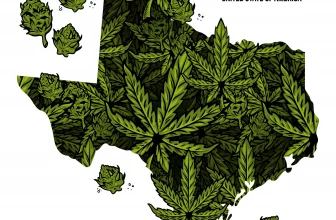
When it comes to cannabis, legalization has been the gate holding back a pack of bulls. Cannabis has gone from zero to hero in the few short years since that gate flew open — and this has created a billion-dollar industry with lots of interesting trends to watch. Cannabis stocks are having their ups and downs and so are some of these cannabis industry statistics.
Let’s take a look at what’s happening in 2020’s wide world of weed.
Industry Sales Stats
For many, the cannabis industry feels like the new Gold Rush (Green Rush?). The following stats illustrate why:
- In the Australian Market, legal cannabis is projected to grow from $52 million to $1.2 billion— a staggering 2,100% growth rate — between 2017 and 2027.
- In the USA, the cannabis industry is predicted to grow to $90.83 billion by 2027.
- The CBD market is estimated to hit $2.1 billion in 2020 as new users begin using CBD both recreationally and medically.
- California leads the nation in cannabis revenues, with $1.03 billion in total revenues in 2018 and 2019. This amount includes $498.1 million for cannabis excise tax, $403.1 million in sales tax, and $123.4 million in cultivation tax.
- Alaska earned around $1 million in tax revenue from legal weed tourism in 2017.
- In 2020, California’s tax revenue from cannabis is expected to be $345.2 million.
- Washington’s cannabis tax revenue is predicted to be $362 million in 2020.
- The cost of 1 oz. of high-quality marijuana is $326.
- The average visitor to a marijuana dispensary spends between $25 and $50 per trip.
- Colorado’s 2018 legal pot sales earned the state $270 million in taxes — six times as much as it made on alcohol taxes.
- Counties that legalized marijuana reported a 20% decrease in alcohol sales.
Industry Growth Stats
Though it’s been full of surprises, the cannabis industry’s overall trend is toward massive, continued growth:
- The worldwide legal marijuana industry is predicted to have a value of $73.6 billion by 2027.
- Buds will comprise the largest market share, followed by oils, then tinctures.
- By 2025, it is expected that legal marijuana sales in the U.S. will account for $23 billion in revenues.
- By early 2019, the legal marijuana industry in the U.S. had grown to $10.4 billion, with over 250,000 people employed in plant handling alone.
- The $10 million investment in U.S. cannabis in 2018 was twice as high as in the previous three years combined.
- Worldwide, people are estimated to spend $57 billion on cannabis by 2027.
- In January 2019 alone, public cannabis companies in North America raised $394.1 million in capital.
- The average funding round was $24.6 million during that month — nearly twice as much as a year earlier.
- Cannabis sales could top U.S. cigarette sales, which have suffered due to people quitting tobacco. Many of these people may choose cannabis as an alternative.
- Cannabis sales in 2017 surpassed combined sales of Oreos, organic produce, Netflix, and McDonald’s.
Cannabis Industry Employment Stats
Legalizing cannabis has created a whole new job sector that didn’t exist before — at least not legally. Here are some recent stats from an employment perspective:
- In December 2018, there were 1,512 cannabis industry job openings on Glassdoor, a 76% increase from December 2017.
- The median annual salary for a job in the cannabis industry is $58,511 — 10.7% higher than the U.S. median salary of $52,863.
- Skilled jobs account for an increasingly large percentage of cannabis industry jobs, with 53% of job openings calling for technical workers (plant science, accounting, etc.).
- 25% of these job openings were located in Los Angeles and San Francisco.
- The average startup cost for a legal dispensary is $775,000.
- A regulated cannabis dispensary pulls in $3 million per year on average.
- The yearly overhead for a regulated cannabis dispensary is $1.92 million on average.
- Women hold 36% of executive positions in the cannabis industry — significantly more than the 22% average across other industries.
Support for Legalization Stats
The journey toward legalization has been a long one, and it’s not over yet. The following stats illustrate the ongoing drive among legislators:
- Marijuana is legal for recreational use in 11 states (Illinois is the most recent addition to the list, legalizing sales on January 1, 2020).
- Medical marijuana use is legal in 33 states.
- On January 16, 2020, there were 975 bills related to cannabis in the hands of Congress and state legislatures. This number is expected to grow on both state and federal levels.
- In 1969, just 12% of Americans believed that marijuana should be legal. Today, 66% of Americans think it should be legalized.
- 62% of Americans support the legalization of recreational marijuana.
- A majority of Republicans (51%) now support the legalization of marijuana.
- Republican support climbed nine percentage points in just one year.
- A 2018 report found that there were 2,132,777 legal medical marijuana users in the USA.
- It is estimated the number of medical marijuana users would be 65% higher if all states legalized it.
Cannabis Recreational Users Stats
Who is using cannabis to contribute to the rapid growth we’re seeing? Here are some stats to give a picture of the average user:
- 60% of marijuana users in the U.S. are men, compared with 40% women.
- In 2015, women accounted for only 25% of all recreational users.
- Baby boomers are the most common generational demographic of CBD users, at 8.4%.
- Among cannabis users, 53% reduced, and 18% stopped their over-the-counter pain treatments.
- 52% of cannabis users have reduced their alcohol consumption, while 7% have stopped altogether.
- In the U.S., 18% of people between the ages of 18 and 29 use marijuana.
- Recreational marijuana has the potential to double medical marijuana in terms of sales by 2022.
Medical Cannabis Stats
Medical marijuana is legal in over half of all states in the U.S. The following stats provide further illustration about its use:
- The medical marijuana market is predicted to continue growing at a compound annual growth rate of 17.1%, resulting in an estimated $55 billion by 2025.
- Maryland reported over 2 million medical marijuana transactions during its first year, with an average transaction cost of $47.08.
- Medical marijuana users are more frequent buyers than recreational users and spend 2.8 times as much per transaction.
- In some states with stricter legislation around marijuana, such as Iowa and Alabama, CBD oil with ≤3% THC is allowed.
- The higher the dose of medical marijuana, the greater the correlation with stopping or reducing over-the-counter pain medications.
Whether you take a connoisseur’s view or a simple academic interest in cannabis, 2020 is an exciting time to be alive. As more states make moves toward legalization in the coming years, there will be plenty to watch out for.






